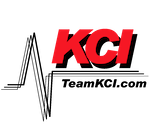Smooth Transition: Steps to Switch to Third-Party Maintenance
Remote monitoring and support technology have revolutionized the way third-party maintenance services are delivered. With the advancements in connectivity and remote access tools, third-party maintenance providers can now efficiently monitor and support IT infrastructure from a remote location. In this article, we will explore how remote monitoring and support have enhanced the effectiveness of third-party maintenance services.
One of the key benefits of remote monitoring and support is the ability to identify and proactively address IT issues before they escalate. With real-time monitoring tools, third-party providers can remotely keep an eye on the performance and health of IT infrastructure, such as servers, network devices, and storage systems. Alerts and notifications can be set up to immediately notify technicians if any anomalies or potential problems are detected. This proactive approach allows for prompt investigation and resolution, minimizing downtime and reducing the impact on business operations.
Remote support further enhances the efficiency of third-party maintenance services. With remote access tools, technicians can troubleshoot and resolve issues without the need to be physically present at the organization’s site. They can remotely control the equipment, diagnose problems, and implement fixes, all in real-time. This eliminates the need for lengthy travel times and can significantly reduce the time it takes to resolve technical issues. Additionally, remote support can be available 24/7, ensuring that organizations receive timely assistance whenever problems arise, regardless of the time of day or their physical location.
The combination of remote monitoring and support also results in cost savings for organizations availing third-party maintenance services. With remote monitoring, technicians can proactively address issues, preventing them from escalating into larger and more costly problems. By resolving issues remotely, organizations can save on travel expenses that would otherwise be incurred if technicians had to physically visit their site. In situations where immediate action is not required, remote access allows for timely response and resolution, avoiding costly downtime and minimizing the impact on productivity and revenue generation.
Another advantage of remote monitoring and support is the ability to scale and support multiple locations or branches of an organization. With remote access tools, technicians can easily connect to different sites and provide support regardless of geographic distance. This level of scalability and accessibility allows third-party maintenance providers to cater to the needs of organizations with a distributed IT infrastructure, offering consistent maintenance and support across all locations. It also eliminates the need for organizations to hire and manage additional staff at each site, further reducing overhead costs.
Furthermore, remote monitoring and support technology provide organizations with valuable insights into the performance and trends of their IT infrastructure. Through monitoring dashboards and reports, organizations can gain a deep understanding of their system’s performance, resource utilization, and potential areas for improvement. This data can be leveraged to optimize IT infrastructure, make informed decisions about future technology investments, and improve overall efficiency.
In conclusion, remote monitoring and support have significantly enhanced the effectiveness of third-party maintenance services. The ability to proactively monitor, quickly diagnose, and efficiently resolve IT issues remotely ensures minimal downtime, cost savings, and improved efficiency. The scalability and accessibility offered by remote access tools enable third-party maintenance providers to support organizations with distributed infrastructures, regardless of their geographical location. As technology continues to advance, remote monitoring and support will continue to play a critical role in providing high-quality maintenance and support services for organizations’ IT infrastructures.

